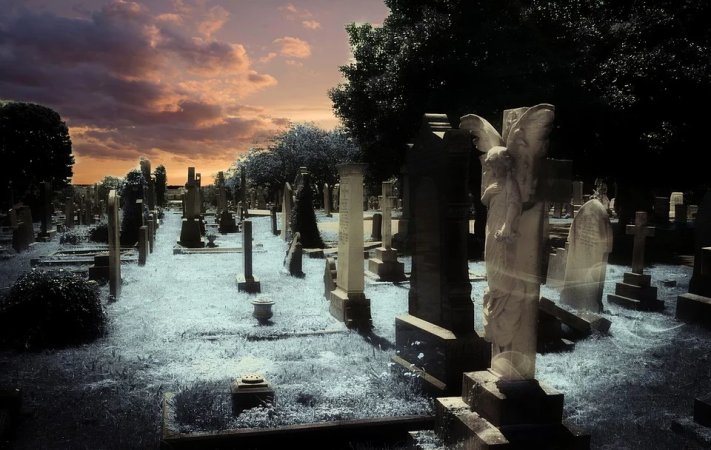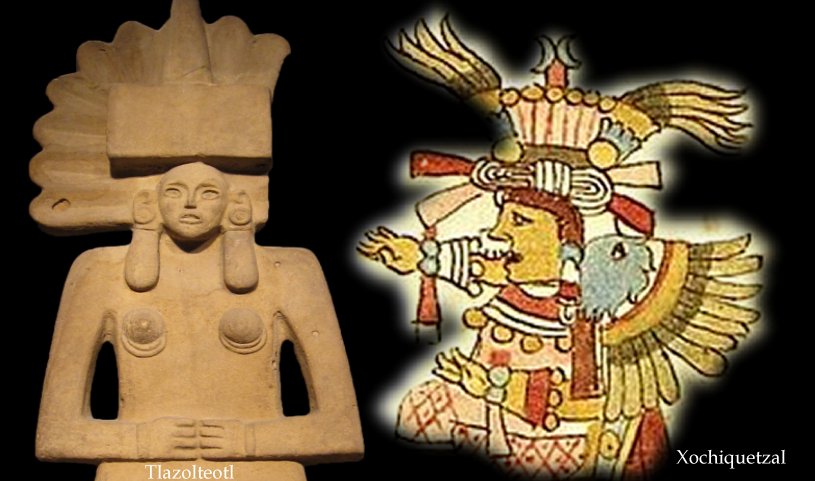Who Were The Sin Eaters?
Conny Waters - AncientPages.com - Not so long ago, a person could get employment as a sin eater and make some money in this unusual profession. As the name implies, sin eaters were those who consumed the sins of a deceased person.
Credit: Public Domain
The Aztec religion offered a formal confession in case of sin or some serious crimes. According to tradition, the Aztecs had the possibility to confess their sins in front of their goddess Tlazolteotl.
The Aztec confession was an important ceremony that usually occurred during the Ochpaniztli Festival.
“After confessing, the person – dressed only in a paper skirt decorated with designs related to goddess Tlazolteotl - had to fast, and then go at night to one of the shrines built for women who died during childbirth. He had to leave its skirt behind, at the shrine - a symbol that they had left behind their sins.” 1
In European countries, the sin-eating ritual was much different. In most cases, a person had to eat something to swallow the deceased's sins.
There are several accounts of sin eaters in Wales. One of the earliest of these stories can be found in The Remaines of Gentilisme and Judaisme, a work of John Aubrey.
A letter from February 1, 1714, relates how sin eating was performed in Wales.
“Within the memory of our Fathers, in Shropshire, in those villages adjoying to Wales, when a person dyed, there was notice given to an old Sire, (for so they called him), who presently repaired to the place where the deceased lay, and stood before the door of the house, when some of the Family came out and furnished him with a Cricket, on which he sat down facing the door. Then they gave him a Groat, which he put in his pocket; a Crust of bread, which he eat; and a full bowle of Ale, which he drank off at a draught. After this, he got up from the Cricket and pronounced, with a composed gesture, the ease and rest of the Soul departed, for which he would pawn his own Soul. “ 2
In many European countries, it was also common to hire poor people to perform funeral services. Their job was to take upon themselves all the sins of the deceased person, which gave many poor people a chance to earn some money.
“The practice of sin-eating began during the Middle Ages and survived into the 19th century in some European countries. At one time it was also practiced by people living in the Appalachian region of the United States.
In many towns the same man was nearly always hired to serve as the sin-eater. This man often became a social outcast because other people believed that all the sins he'd absorbed must have turned him into a vile evil person.
Usually, only a very poor man was willing to play this role. Some of these men learned to recite special prayers or incantations over the bread after they arrived, claiming that this was necessary for the sins to be transferred from the dead body to the bread. They thought that this pretense would increase their chances of being hired when the next death occurred.
When a member of a very poor family died, the survivors often couldn't afford to pay the fee of a sin-eater. In this case, they would sometimes lay a piece of bread on the dead body, say some prayers over it, then carry the bread into the street and give it to a beggar without telling him that it had been on top of a corpse. By using this trick, they could get the sins removed from the body of their loved one for free.“3
One can conclude that how this curious ritual was performed varied between countries and cultures. The practice of eating sins was universal and was encountered among many ancient civilizations.
Updated on April 19, 2024
Written by Conny Waters – AncientPages.com Staff Writer
Copyright © AncientPages.com All rights reserved. This material may not be published, broadcast, rewritten or redistributed in whole or part without the express written permission of AncientPages.com
Expand for references- Sutherland - What Was An Aztec Confession? AncientPages.com
- Hartland, E. Sidney. "The Sin-Eater." Folklore3, no. 2 (1892): 145-57. Accessed January 21, 2020.
- Barry Wilson – Weird Beliefs
More From Ancient Pages
-
 Evidence Of Frightening Rituals Practiced By Ancient Steppe Nomads In Siberia – Discovered
Archaeology | Sep 19, 2020
Evidence Of Frightening Rituals Practiced By Ancient Steppe Nomads In Siberia – Discovered
Archaeology | Sep 19, 2020 -
 A 4.4 Million-Year-Old Hand Of ‘Ardi’ Has Some Clues On Humans’ Upright Walking
Fossils | Feb 25, 2021
A 4.4 Million-Year-Old Hand Of ‘Ardi’ Has Some Clues On Humans’ Upright Walking
Fossils | Feb 25, 2021 -
 New Species Of Stegosaur Is Oldest Discovered In Asia, And Possibly The World
Fossils | Mar 7, 2022
New Species Of Stegosaur Is Oldest Discovered In Asia, And Possibly The World
Fossils | Mar 7, 2022 -
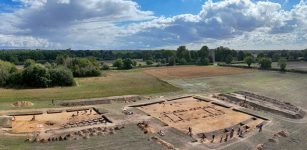 Huge 1,400-Year-Old Hall Of The First Kings Of East Anglia Discovered In Rendlesham
Archaeology | Oct 5, 2022
Huge 1,400-Year-Old Hall Of The First Kings Of East Anglia Discovered In Rendlesham
Archaeology | Oct 5, 2022 -
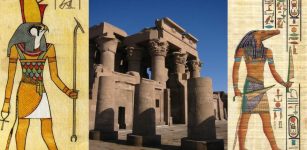 Unusual Double Temple Of Kom Ombo Dedicated To Crocodile God Sobek And Falcon-Headed God Horus
Featured Stories | Mar 14, 2016
Unusual Double Temple Of Kom Ombo Dedicated To Crocodile God Sobek And Falcon-Headed God Horus
Featured Stories | Mar 14, 2016 -
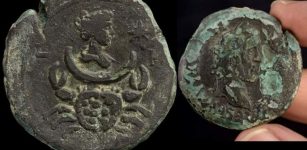 1,850-Year-Old Rare Bronze Coin, Depicting Roman Moon Goddess Luna – Unearthed
Archaeology | Aug 3, 2022
1,850-Year-Old Rare Bronze Coin, Depicting Roman Moon Goddess Luna – Unearthed
Archaeology | Aug 3, 2022 -
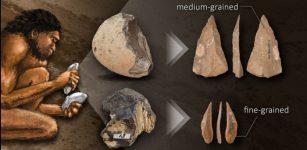 Paleolithic Humans May Have Understood The Properties Of Rocks For Making Stone Tools
Archaeology | Dec 2, 2023
Paleolithic Humans May Have Understood The Properties Of Rocks For Making Stone Tools
Archaeology | Dec 2, 2023 -
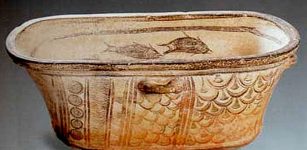 Was Hygiene Important For Our Ancestors?
Featured Stories | Feb 11, 2017
Was Hygiene Important For Our Ancestors?
Featured Stories | Feb 11, 2017 -
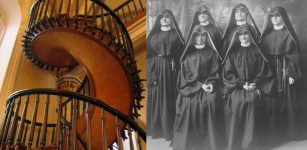 Legend Of The Loretto Chapel Staircase – Unusual Helix-Shaped Spiral Construction
Featured Stories | Nov 1, 2018
Legend Of The Loretto Chapel Staircase – Unusual Helix-Shaped Spiral Construction
Featured Stories | Nov 1, 2018 -
 Bona Sforza – Ambitious Queen Of Poland Was Betrayed And Murdered
Featured Stories | Jan 21, 2019
Bona Sforza – Ambitious Queen Of Poland Was Betrayed And Murdered
Featured Stories | Jan 21, 2019 -
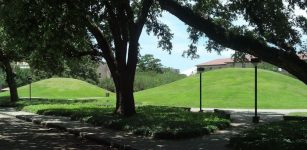 Mounds In Louisiana, North America Offer Insight Into Middle Archaic Lifestyles
Archaeology | Dec 2, 2022
Mounds In Louisiana, North America Offer Insight Into Middle Archaic Lifestyles
Archaeology | Dec 2, 2022 -
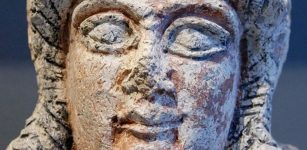 Ancient Mesopotamian City Discovered And Identified As Xarab-i Kilashin
Archaeology | Jul 11, 2017
Ancient Mesopotamian City Discovered And Identified As Xarab-i Kilashin
Archaeology | Jul 11, 2017 -
 Brian Boru – Famous And Brave Irish Hero Who Dared To Chase Off The Vikings
Featured Stories | Jun 14, 2022
Brian Boru – Famous And Brave Irish Hero Who Dared To Chase Off The Vikings
Featured Stories | Jun 14, 2022 -
 How Did Hindu God Shiva Get His Third Eye?
Featured Stories | May 13, 2019
How Did Hindu God Shiva Get His Third Eye?
Featured Stories | May 13, 2019 -
 Hundreds Of 19th-Century Skulls Collected In The Name Of Medical Science Tell A Story Of Who Mattered And Who Didn’t
Featured Stories | Nov 14, 2024
Hundreds Of 19th-Century Skulls Collected In The Name Of Medical Science Tell A Story Of Who Mattered And Who Didn’t
Featured Stories | Nov 14, 2024 -
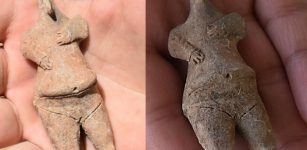 7,800-Year-Old Clay Female Figurine Unearthed In Ulucak Mound, Turkey’s Izmir
Archaeology | Aug 17, 2022
7,800-Year-Old Clay Female Figurine Unearthed In Ulucak Mound, Turkey’s Izmir
Archaeology | Aug 17, 2022 -
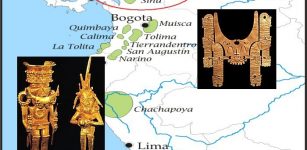 Malagana Remarkable Sophisticated Goldwork: Legacy Of Colombian Pre-Hispanic Culture
Artifacts | Nov 14, 2018
Malagana Remarkable Sophisticated Goldwork: Legacy Of Colombian Pre-Hispanic Culture
Artifacts | Nov 14, 2018 -
 Unraveling The Mystery Of A Lost Biblical Underground World – Is A Precious Ancient Artifact The Answer?
Ancient Mysteries | May 30, 2018
Unraveling The Mystery Of A Lost Biblical Underground World – Is A Precious Ancient Artifact The Answer?
Ancient Mysteries | May 30, 2018 -
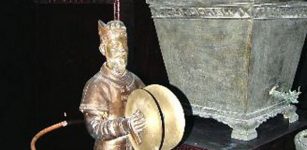 Highly Advanced Robots In Ancient China
Ancient Technology | Aug 7, 2015
Highly Advanced Robots In Ancient China
Ancient Technology | Aug 7, 2015 -
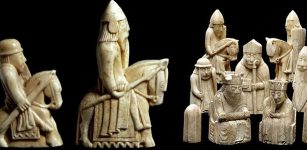 Mystery Of The Beautiful Viking Uig Chessmen Found On The Isle Of Lewis, Scotland
Artifacts | Dec 14, 2015
Mystery Of The Beautiful Viking Uig Chessmen Found On The Isle Of Lewis, Scotland
Artifacts | Dec 14, 2015

